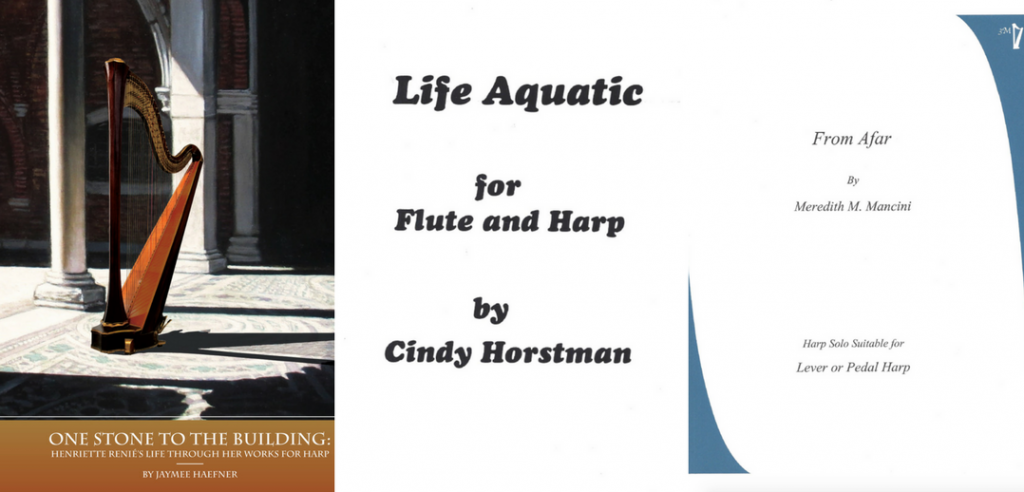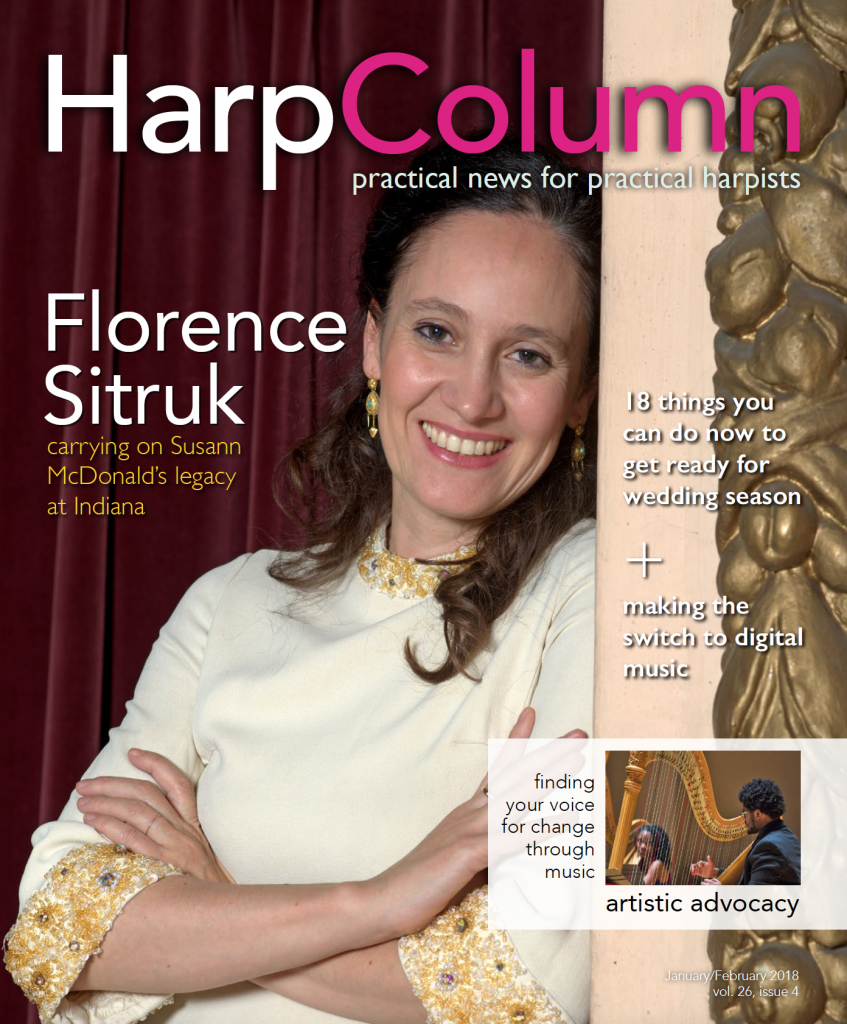
While the normal topic of this column is published music, this edition will highlight a new book that should be of interest to harpists. One Stone to the Building is about the life of Henriette Renié and her unique contributions to the harp world. It was written by Dr. Jaymee Haefner, professor of harp at the University of North Texas, and published by AuthorHouse (www.authorhouse.com). Although this is not the first biographic work about Renié, nor is it intended to be the definitive review of her works, it provides a valuable look at her roles as virtuoso, composer, and teacher.
From the tender age of 5, when little Henriette announced that Alphonse Hasselmans would be her harp teacher, she seemed destined to pursue the harp. There is no reference in the biographic section about the eventual split between Renié and Hasselmans or their subsequent reconciliation. It does, however, explain why Renié did not succeed Hasselmans as professor at the Paris Conservatory and why she was long denied the appointment as a Knight in the Legion of Honor. It further describes her role in establishing the superiority of the double action pedal harp over the chromatic harp.
After profiling Renié’s background, Haefner analyzes the famous Légende, beginning with a translation of the poem, “Les elfes,” on which the composition is based. This analysis—complete with samples from the music—provides powerful insight into Renié’s musical interpretation of the poem. Haefner offers the same thorough evaluation of Deux promenades martinales, the Concerto en ut mineur, and Scherzo-Fantaisie. Anyone who studies these advanced pieces will appreciate Haefner’s dissections.
Next, Haefner explores Renié’s role as teacher. Chapter four features a review of the two volumes of the Méthode complète de harp. Haefner points out several differences between Renié’s method and other popular methods of the time.
In addition to writing many compositions for the harp, Renié believed that studying classical music was essential to the musical development of students. Her 12 volumes of transcriptions, Les classiques de la harpe, illustrate her extensive knowledge of keyboard repertoire. In addition to a general discussion of these 12 volumes, the book focuses on two transcriptions: “Tic-toc-choc ou les maillotins” by Couperin and “Moment musical” by Schubert.
The final chapter reflects on the legacy of Henriette Renié. Appendix A includes three interviews that were aired in 1965, several years after her death. Appendix B lists the compositions and transcriptions by Renié.
The book includes numerous photos of Renié throughout her life. There are other books about this legendary harpist, notably Henriette Renié, Living Harp by Françoise des Varennes and The Legend of Henriette Renié, by Odette de Montesquiou. This latest book helps to draw attention to Renié’s tremendous influence on the development of the harp and its repertoire and to cement the legacy of this genius of the harp.
Now, back to music. Cindy Horstman has written and published a lovely piece for harp and flute, “Life Aquatic.” It portrays aquatic life in the Pacific Ocean. This appealing opus earned her second place in the composition competition of the Los Angeles Chapter of the American Harp Society in 2017.
There are four movements with recurring themes that emerge throughout the piece. Horstman says she drew her inspiration from the diversity of life in tide pools, the gentle motion of waves, and the playful sea otters. These concepts are definitely evoked by her imaginative composition.
There is a short prelude followed by the first movement, “Tide Pools” in 3/4. There are frequent but manageable and well-marked pedal changes that provide interesting harmonies. The meter changes to 4/4 at the end with some triplets on the harp.
The second movement, “Sea Otters,” has a pulsing accompaniment off the beat. She also uses harmonics to add color. Some muffling gives it a playful feel.
The final movement, “Waves,” features rhythmic, descending Aeolian chords played with the back of the nails. The finale includes scale glisses.
The typesetting is easy to read, and the page turns were planned. The music comes with a score and separate parts for the harp and flute. Conveniently, you can listen to a recording of this piece on the composer’s website, www.cindyhorstman.com. Listen to it and you will no doubt find it a worthy addition to your repertoire.
Another original melody for pedal or lever harp is “From Afar,” written and published by Meredith Mancini. The piece is four pages long and has no lever or pedal changes.
It starts out with eight measures of large chords, followed by the main theme played only in the right hand. The main theme repeats, this time with a simple, left hand accompaniment. Then it switches from 4/4 to 3/4 and uses predominantly eighth notes until almost the end. Large chords return until the final measure with an upward arpeggio pattern.
This piece would be suitable for the intermediate or lower intermediate player. It is likable yet with a somewhat melancholy and wistful mood. •






